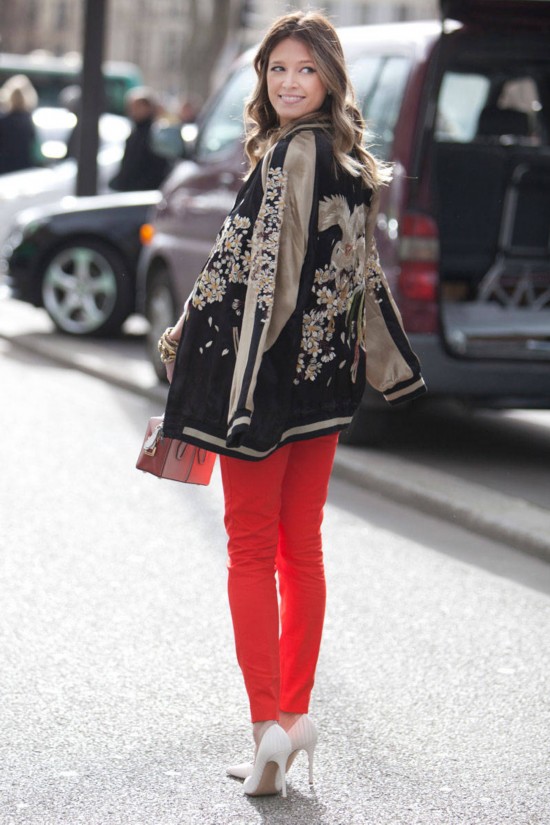Title: Embroidered Scarves and Shawls: A Cultural Exploration
Embroidered scarves and shawls are not only fashionable accessories but also hold significant cultural value. These textiles have been used for centuries as a form of self-expression and communication, reflecting the unique traditions, beliefs, and values of various cultures. For example, in India, intricate embroideries on scarves and shawls often depict religious symbols, mythology, and historical events, providing a glimpse into the country's rich cultural heritage. Similarly, in China, silk embroidery is highly valued for its delicate craftsmanship and aesthetic appeal, with patterns ranging from traditional floral designs to mythical creatures. Embroidery has also been used as a means of storytelling, with each stitch telling a different part of a narrative. Furthermore, the production of embroidered scarves and shawls often involves skilled artisans who pass down their techniques from generation to generation, perpetuating these cultural traditions. In today's fast-paced world, where mass-produced items dominate the fashion industry, the significance of handmade textiles made with care and attention to detail cannot be overstated. Embroidered scarves and shawls serve as a testament to the enduring power of culture and art. They are not just beautiful pieces of clothing but also windows into the past and a bridge connecting different generations and cultures.
In the vast realm of fashion accessories, few pieces have withstood the test of time quite like the humble scarf. From its origins as a functional accessory to its current place as a statement piece, this versatile textile has captured the hearts (and scarves) of fashion lovers around the world. Among these diverse styles, two particular categories stand out for their intricate beauty and cultural significance: embroidered scarves and shawls. In this article, we'll delve into the history, design, and cultural significance of these stunning handmade creations.

The Evolution of Embroidery on Scarves
The origins of embroidery can be traced back to ancient civilizations, where it was used not only for practical purposes but also for artistic expression. As such, it is no surprise that embroidery has found its way onto scarves over the centuries. However, it wasn't until the Middle Ages that embroidery on scarves began to gain popularity in Europe. During this time, wealthy nobles and merchants would commission elaborate designs from skilled artisans, using gold and silver threads to create stunning works of art. These intricate patterns not only added luxury and elegance to the wearer's attire but also served as a symbol of social status and wealth.
Design Elements of Embroidered Scarves and Shawls
The design elements of embroidered scarves and shawls are as varied as the cultures from which they come. In India, for example, vibrant colors and intricate geometric patterns are common, reflecting the country's rich cultural heritage and religious symbolism. Meanwhile, in Morocco, the use of geometric shapes and bold color combinations creates a unique blend of traditional and modern styles.
One characteristic shared by many embroidered scarves and shawls is the use of motifs inspired by nature. From flowers and leaves to animals and insects, these designs capture the beauty of the natural world in a way that transcends language and culture. Moreover, many embroidered scarves feature messages of love, friendship, and hope, making them not only stylish accessories but also symbols of positive emotions and aspirations.
Cultural Significance of Embroidered Scarves and Shawls
The cultural significance of embroidered scarves and shawls lies not only in their aesthetic appeal but also in their ability to bridge divides between different communities. In an increasingly globalized world, where cultural barriers can sometimes seem insurmountable, items like these serve as reminders that we share more in common than we realize. By wearing or gifting an embroidered scarf or shawl from another culture, we can foster understanding, appreciation, and even friendship between people from different backgrounds.
Furthermore, many artisans who specialize in embroidery continue to pass down their skills from one generation to the next, preserving traditional techniques and designs while incorporating new innovations and ideas. This ensures that these beautiful textiles remain an integral part of our global culture for years to come.
Conclusion: The Enduring allure of Embroidered Scarves and Shawls
As fashion trends come and go, it is comforting to know that some pieces will always hold a special place in our hearts. For those seeking both style and meaning, there is perhaps no better choice than an embroidered scarf or shawl. These timeless textiles offer a glimpse into the rich cultural histories of the worlds beyond our own, while also allowing us to express our individuality and creativity through fashion. So why not add a touch of elegance and cultural significance to your wardrobe today? Your senses – and your heart – will thank you for it.
Articles related to the knowledge points of this article:
Title: Unveiling the Art of Tying a JK Tie: A Comprehensive Guide
Is It Okay to Waterproof Your Down Comforter?
Title: The Art of Pairing a White Shirt with a Tie: A Guide to Perfect Combinations
Title: The Evolution of Tie Selections for Wedding Ceremonies: Between a Bow Tie and a Tie
Title: Mastering the Art of Tying a Tie: A Comprehensive Guide to Tying a Perfect Bow
High Fashion Winter Coats: The Definitive Guide to Choosing the Best One for You



